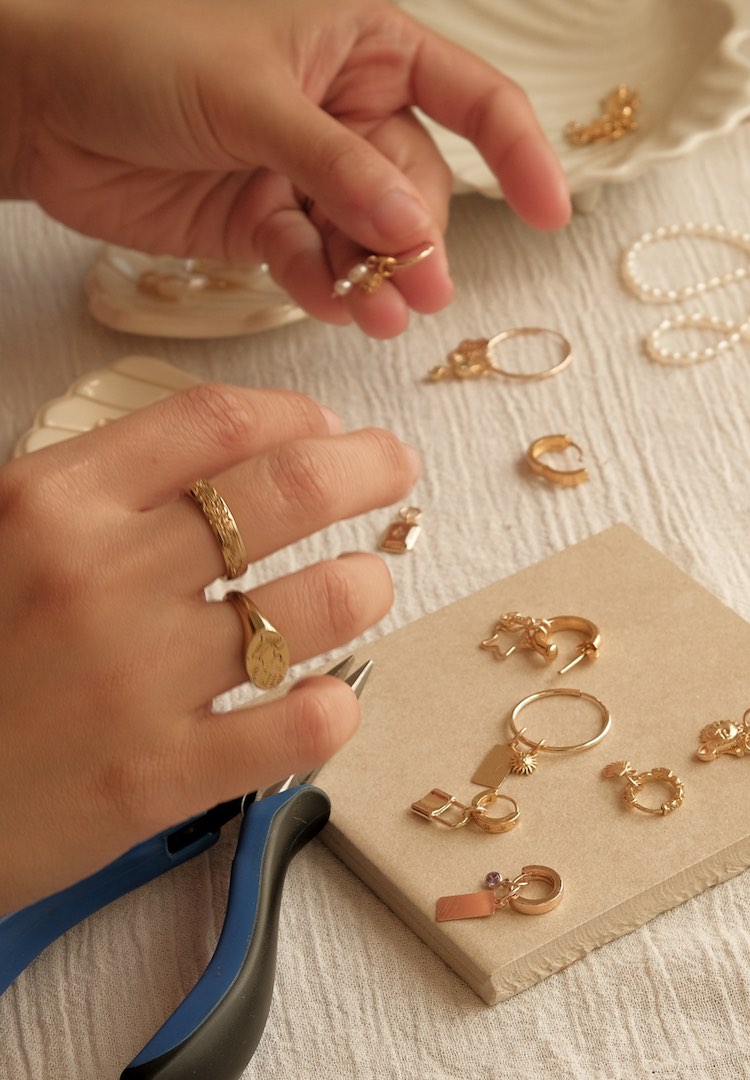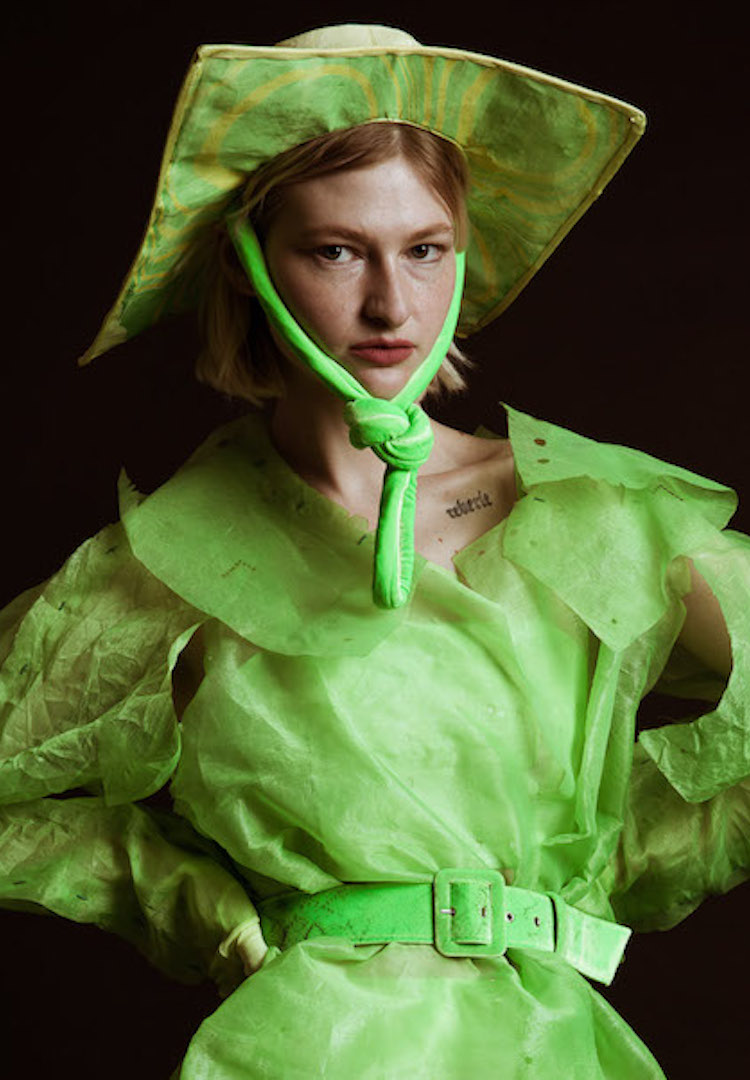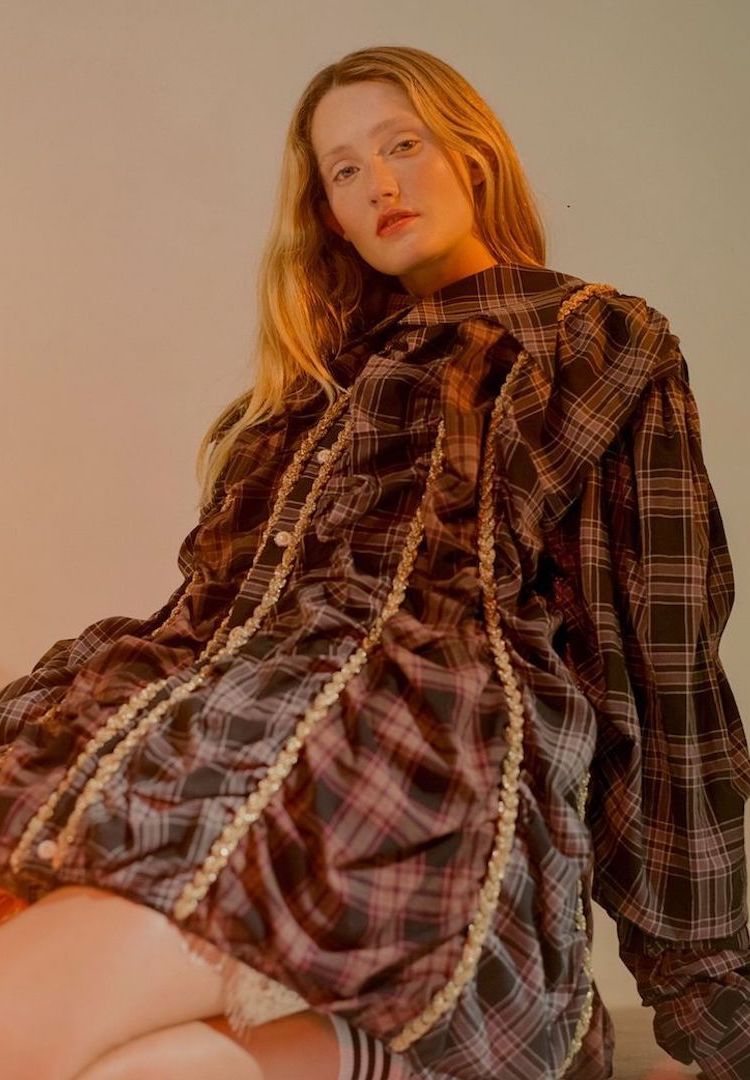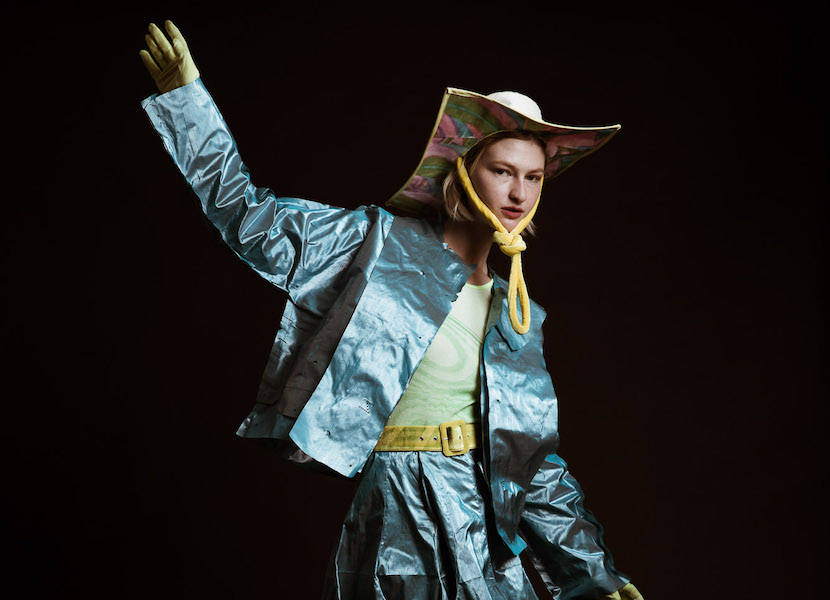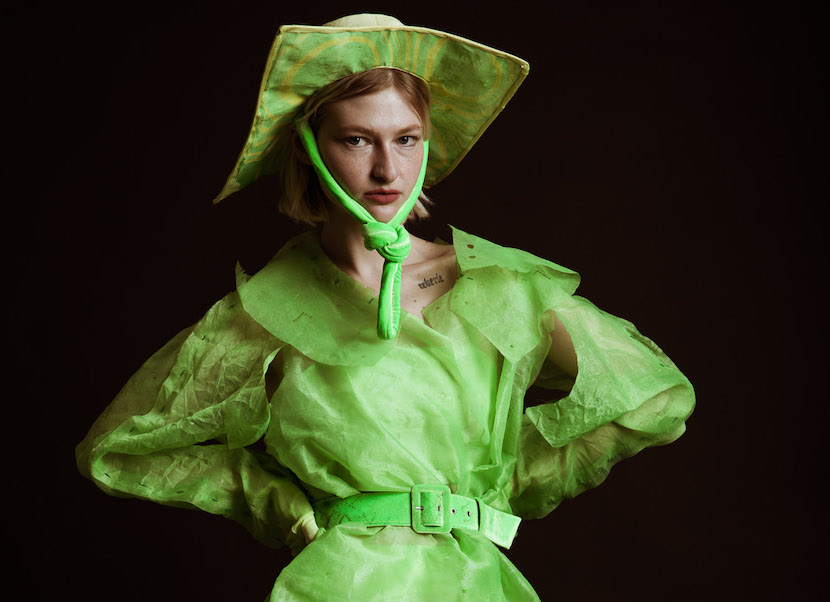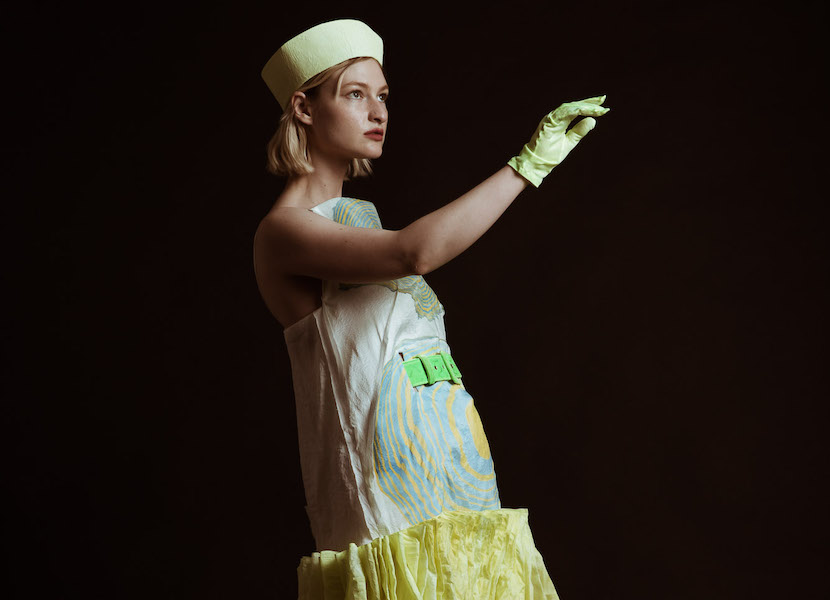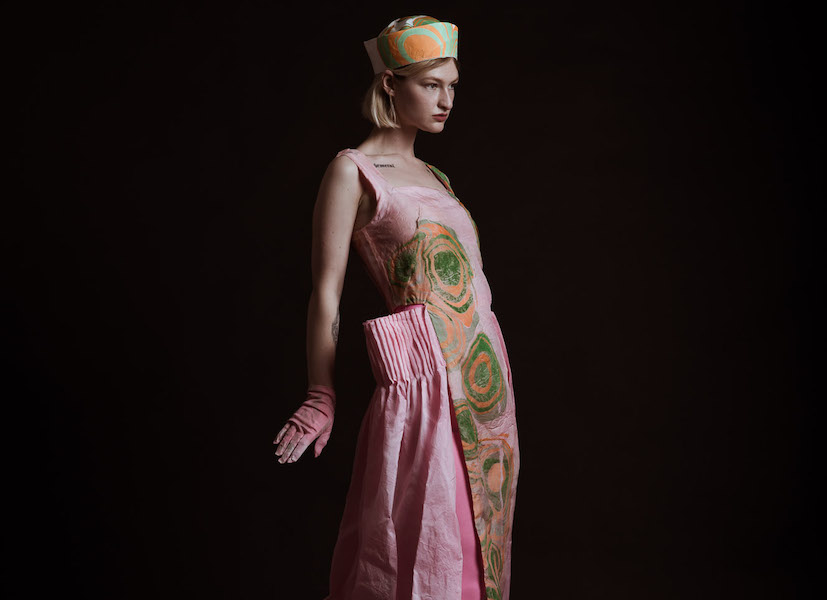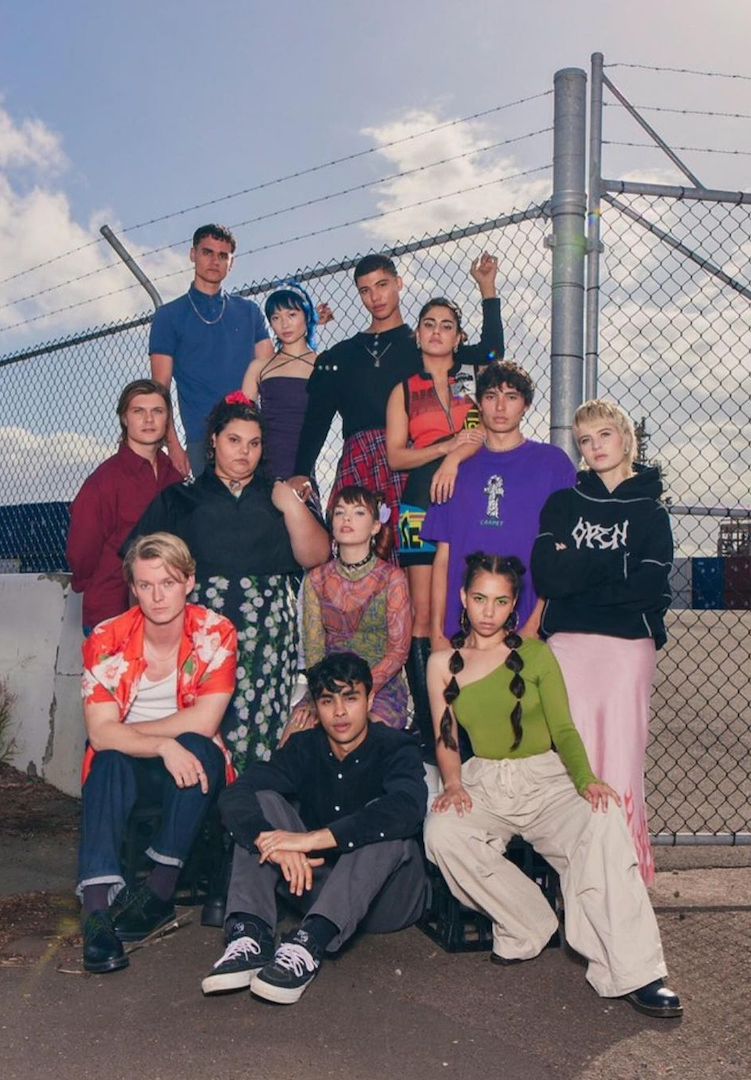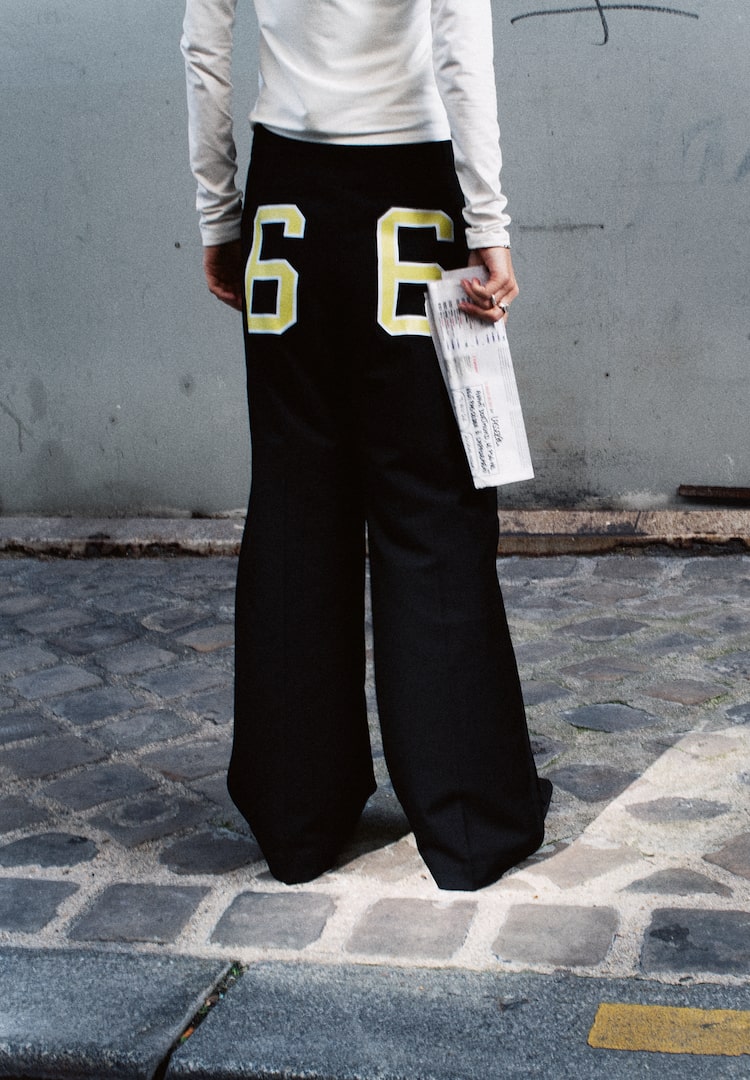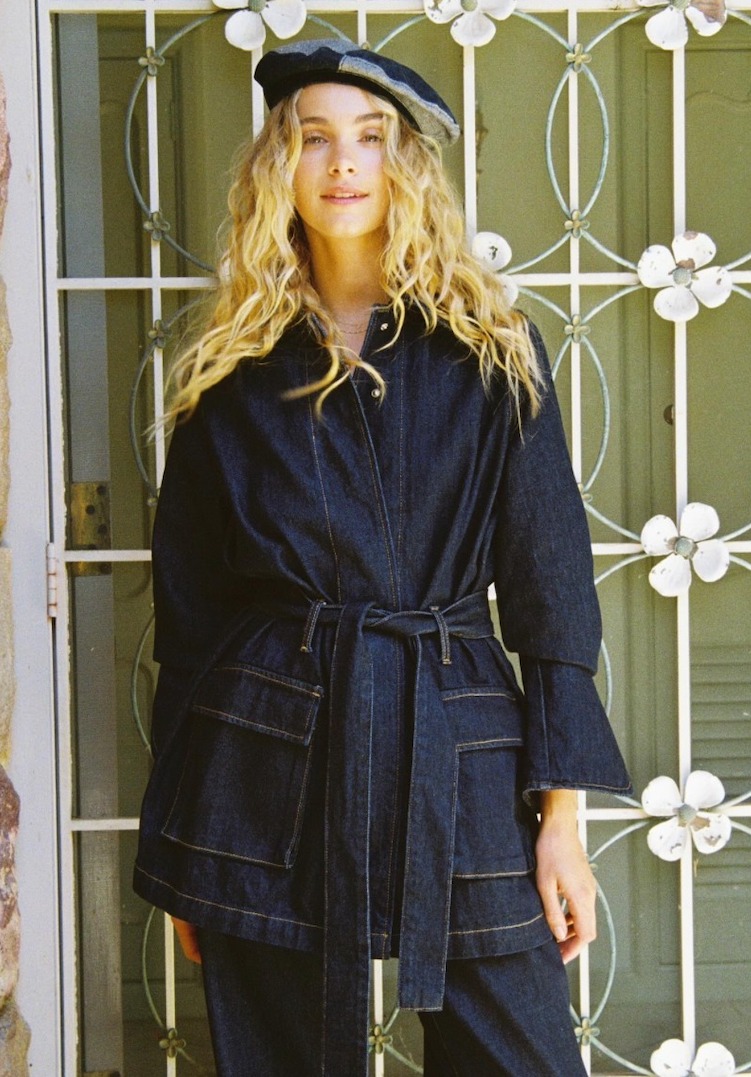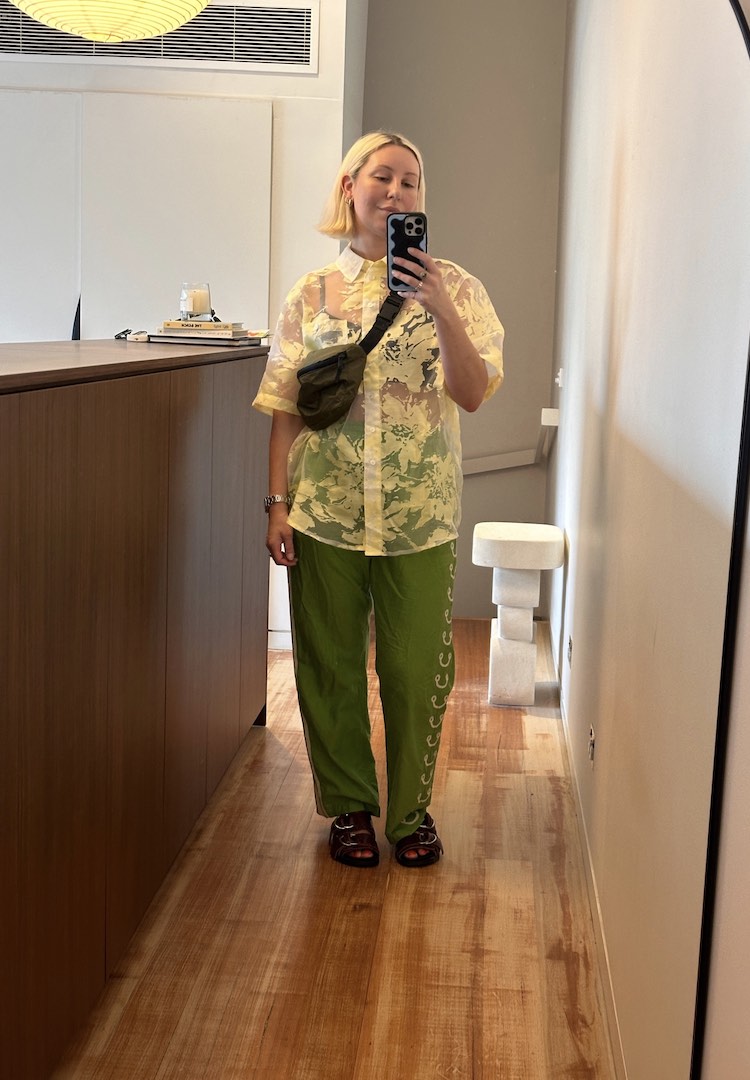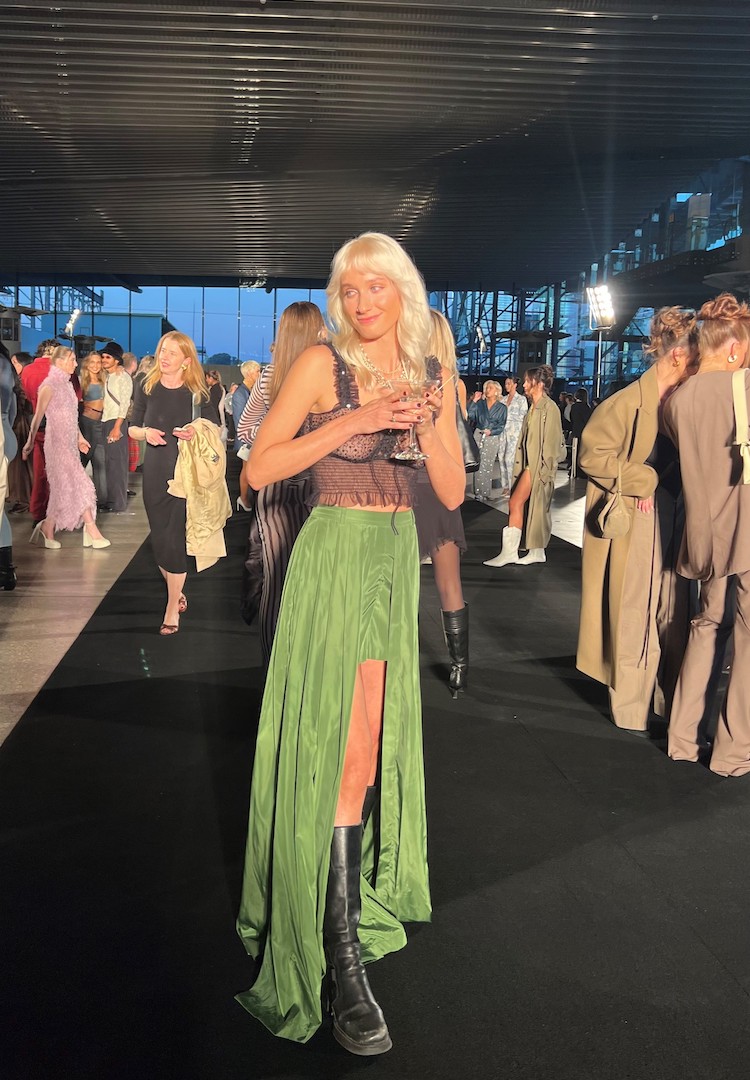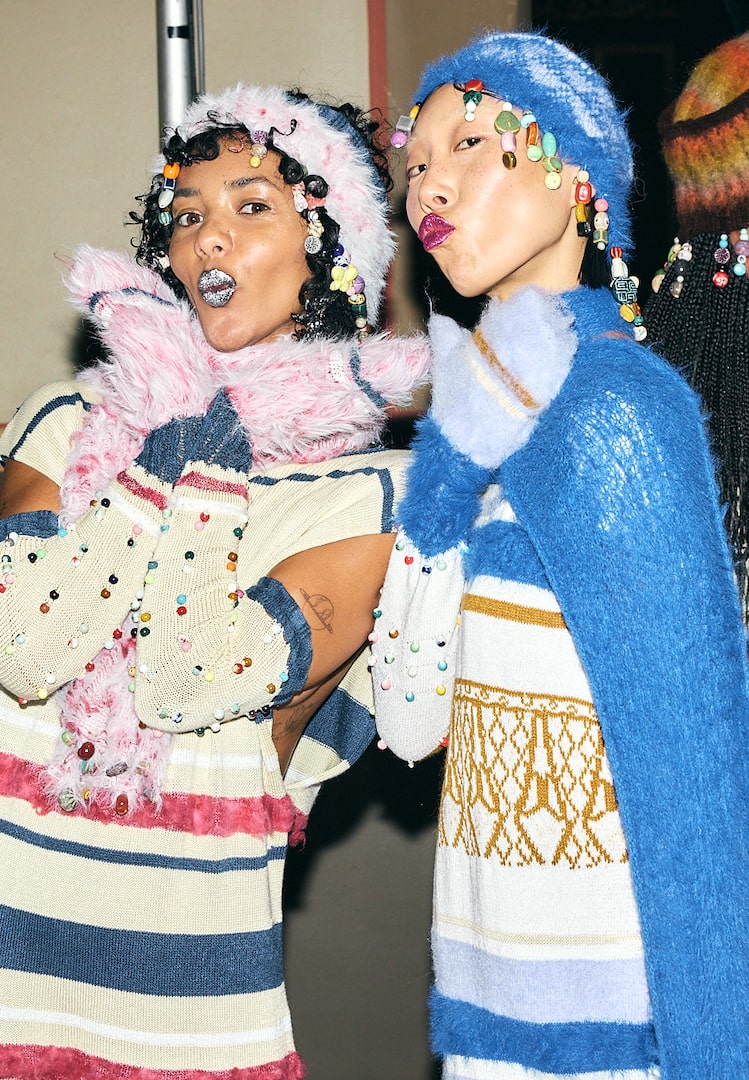Amy Lawrance’s graduate collection is a homage to the history of dressmaking
WORDS BY EVE LOLLBACK
Celebrating the home from home.
Melbourne designer Amy Lawrance is a big fan of historical craft and dressmaking, using fashion’s rich past as the foundation for her graduate collection. Landing herself a finalist spot in Melbourne Fashion Festival’s National Graduate showcase after completing a Bachelor of Fashion (Honours) at RMIT, Amy’s collection Dreams on Paper is an innovative melting pot of old and new.
Using a combination of hand and machine sewing, she explores the world of manual textile manipulation to elevate otherwise modest fabrics. These delicately layered textiles bring life to her designs, which are all about rich textures and joyful colours worthy of Barbie herself.
Please introduce yourself to our readers.
My name is Amy, I have recently graduated from an honours degree at RMIT. I love making. I’m always looking for new creative projects, whether it be fashion design specifically or drawing or painting. That’s probably me in a nutshell.
Tell us about your collection.
My initial inspiration for Dreams on Paper was looking at the history of home dressmaking. I started looking at home dressmaking before COVID took hold of Melbourne last year and once that happened it became all the more relevant. I started identifying objects around my home that bore particular significance to the practices of historic home dressmaking. I had a little suitcase filled with home dressmaking patterns that belonged to my elderly next-door neighbour, which she used to make children’s clothing for her kids in the ’60s. I also had a shoebox filled with Barbie clothes that belonged to my mum as a little girl. From there, I started playing with fabric and using techniques that were easy to do in a domestic setting such as hand dyeing and starching. The collection is a marriage of children’s dressmaking patterns with the colours and silhouettes of the Barbie doll clothes. I wanted to create a joyous, colourful collection that would be a homage to home dressmaking while celebrating the ordinary things that are around us every day.
View this post on Instagram
Tell us about the experience of putting together your graduate collection.
It all happened in my lounge room and kitchen, making do with what I had around me. I was lucky to have an industrial sewing machine, but other than that, it was really a matter of using techniques such as hand starching and dyeing things in the kitchen sink and then drying them out on the clothesline. I use just the one type of fabric, a lightweight silk habotai that I then dyed and used manipulation techniques to create variety in the collection with the one material palette that I was working with.
How do you describe your design style?
It is always very driven by textiles. I start with the textile and then I play with different hand techniques. The silhouette kind of develops from there. I love handling the fabric and exploring different textures, and qualities that I can bring to it quite a plain fabric through manipulating it.
What part does sustainability play in your design practice?
I approach sustainability mainly through the use of mono-materiality in my practice. In using natural fibres like silks, I was able to push a singular fabric as much as I could through hand dyeing and hand starching to replicate other textiles. The starching as well is an ecofriendly manipulation technique using only corn-starch and water.
View this post on Instagram
What were your major points of inspiration for your graduate collection?
I liked taking the pattern pieces from my neighbour, out of the sleeves. It has a kind of delicate quality, like a lightweight tissue. From there, I started trying to emulate that same delicate quality in fabrics. I wanted the lightweight silk habotai to take on a papery kind of texture. Through my mum’s Barbie doll clothes, I wanted to reference the sort of naive, childlike shapes, and the sort of psychedelic ’60s colour palette.
What’s next for you?
I wouldn’t mind a design assistant role. A friend and I are starting a small womenswear collection together, so that’s something that we’re kind of playing with at the moment.
Find more of Amy’s work here.

